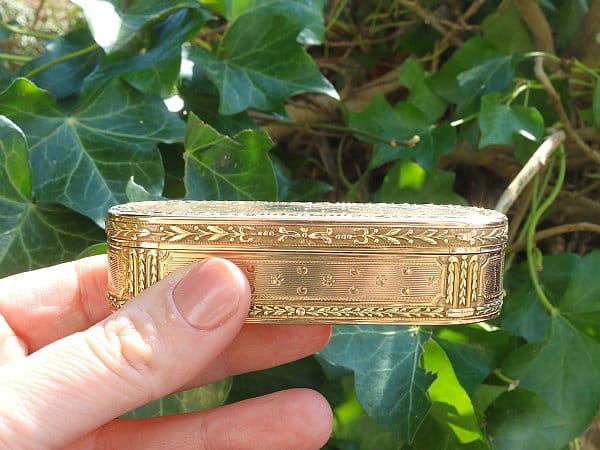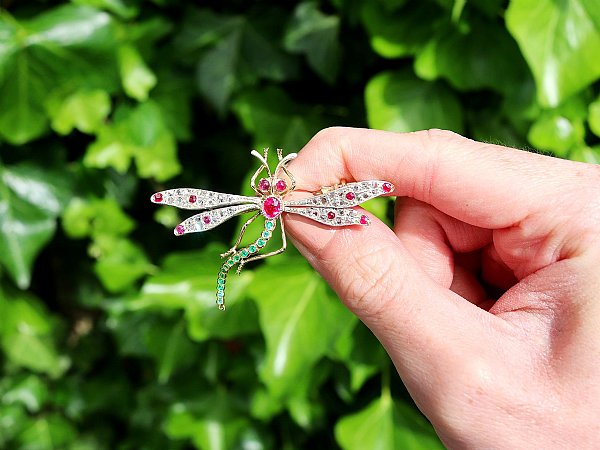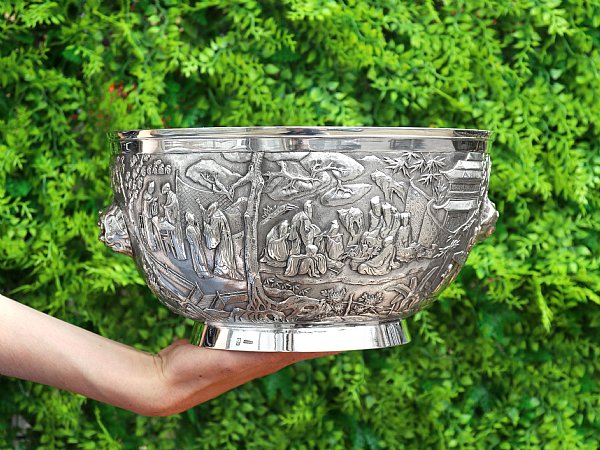Search Results for: '{{searchText}}'
Sorry...
We don't seem to have what you're looking for.
However we do have thousands of magnificent pieces of silver and jewellery available for you to view online. Browse our store using one of these categories.
Please wait for loading data... 
At AC Silver we are pleased to be able to offer our customers a range of antique silver and gold snuff boxes for sale.
The impressive range of collectable snuff boxes cover examples from many periods including the Victorian and Edwardian eras.
Andrew Campbell hand picks all vintage and antique silverware in AC Silver’s inventory and will only select the finest examples of their type for inclusion.
Antique snuff boxes are wonderfully charming pieces which are usually highly decorated with delicate engraving, and we have many continental varieties from the Georgian and Victorian eras.

Any powder that has been prepared for sniffing can be considered ‘snuff’, however snuff most commonly refers to powdered tobacco.
The consumption of snuff was first documented in the late 1400s, and was greeted by a very mixed reception. Snuffing (inhaling snuff) was first witnessed by a European in 1493, when Friar Ramón Pane, who had arrived in the new world courtesy of Christopher Columbus, was living as a missionary among Haiti’s indigenous Taíno. Tobacco had been more or less unknown to Europeans prior to this, but the use of it rapidly increased in popularity during the 1500s. Inhaling snuff became established in England during the reign of Charles II (1630 -1685) at which stage it was acceptable for even ladies to take it.
During the mid-1600s snuff increased in popularity because it was believed that it was an effective preventative measure in warding off the plague. By the 1700s, snuff was the approved tobacco product favoured by the nobility.
By the late 17th Century, ornate boxes were being produced to keep the precious snuff dry. Throughout European and colonial history in the 18th and 19th centuries, the snuff box was a major - often bespoke - essential personal possession, made in a variety of materials, from gold and silver to tortoiseshell or horn or even mammoth tooth. Snuff boxes are made in two sizes: small boxes for the pocket, and larger, communal boxes made for table use. Pocket boxes are usually made to hold a small amount of snuff for immediate consumption, and are intended to contain a day or two''s supply.
In order to keep the snuff dry and contain the tobacco aromas within the box, tight-fitting lids were essential. This feature can help collectors today establish whether a box was initially intended to contain snuff. Snuff boxes for individual use also don''t typically extend beyond 1.5 inches in width, another detail to aid accurate identification.
A snuff mull is a variation of a snuff box, used for the consumption of tobacco in its powdered form.
The ritual that accompanied this became established around the 1600s, as snuff became popular in Britain. These can be found in many forms, a popular type being the ‘pocket snuff mull’.
Snuff mulls were especially popular in Scotland, with the name seemingly deriving from ‘snuff mill’.
Snuff mulls were made from the 1600s to the 19th century, with little change to their style or design during this time.
These were made from various resources, including silver mounted horn, sea shells, rock crystal and other semi-precious materials indigenous to Scotland. They featured silver lids, to ensure that the snuff inside wasn’t exposed to oxygen which might compromise it.
Occasionally, snuff mulls were engraved, incorporating a date to commemorate a specific event. These included Highland games, agricultural shows and horse races.
Large versions of snuff mulls were created for table use. These were especially popular in the late 18th and early 19th centuries. These versions also featured additional appendages, such as tiny hammers to break up snuff, rakes to extract impurities and brushes to remove excess snuff from the face.
Table snuff mulls were large and impressive; many were made from rams’ heads. These designs were often mounted onto wheels so they could be pushed and pulled along the dining table.




